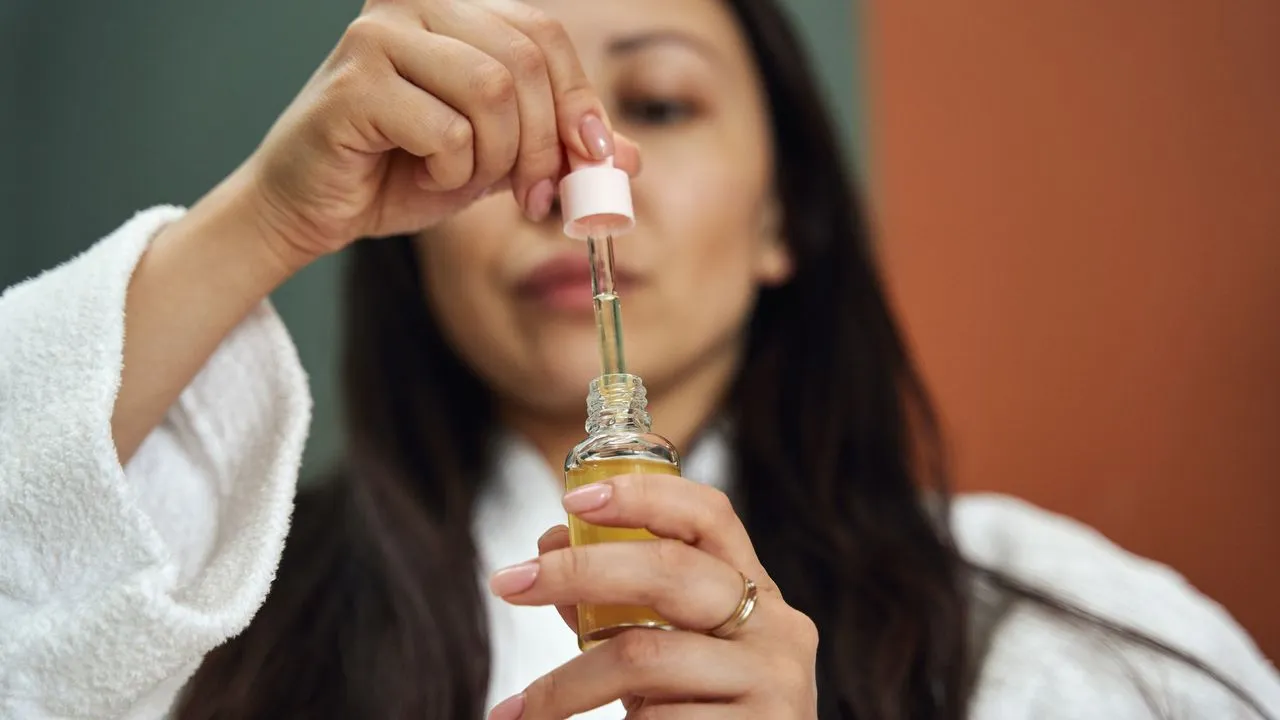Is it Best to Take Vitamin C Before or After Hyaluronic Acid, or is this the skincare version of “chicken or the egg”? It does make a difference. Here’s how to layer these skincare superstars for maximum glow.

Skincare is a science experiment, and when you’re working with over one product, it’s difficult to keep up. Two of the most popular ingredients, hyaluronic acid and vitamin C are both amazing for your skin, but do you combine them?
And if you combine them, what order do you apply first? Don’t worry, we’ve got you. Let us break it down in simple-to-grasp language so you can layer like a pro.
What Do Vitamin C and Hyaluronic Acid Do?
Vitamin C is an antioxidant that brightens your skin, reduces dark spots, and protects against environmental stress. It also promotes collagen growth, keeping your skin tight and youthful.
And then the hyaluronic acid is one with a hydrating hero that brings in and holds water in your skin, so it’s plump, smooth, and dewy. It’s like water for your face. Both are awesome, but they work best when applied in the right order.
What is the Golden Rule of Skincare Layering?

For skin care, the rule of thumb is to apply products of thinnest to thickest texture. In that way, every product will be able to penetrate into your skin properly without being hindered by thicker formulas. This is how the rule applies with vitamin C and hyaluronic acid:
1. Vitamin C
It is usually a watery serum.
2. Hyaluronic Acid
This can be a serum or a bit thicker moisturizer, depending on the product. So, according to this rule, vitamin C must be applied first, then hyaluronic acid.
Why Put Vitamin C First?
Vitamin C is an active ingredient, so it must penetrate your skin in order to be effective. Putting it on first allows it to absorb without any obstructions. Here’s why this works:
1. Improved Absorption
Vitamin C can penetrate your skin more effectively if you put it on clean, dry skin.
2. Maximizes Benefits
If you put on vitamin C first, you give it a chance to do its work of whitening and protecting your skin.
3. Prepares Skin to Retain Moisture
Once the vitamin C has penetrated, hyaluronic acid will lock the moisture into place and hydrate your skin.
Why Put Hyaluronic Acid Second?

Hyaluronic acid is a humectant, which means it draws moisture into your skin. Applying it after vitamin C traps the benefits and keeps your skin hydrated. That is why this sequence of steps works:
1. Locks in Moisture
Hyaluronic acid is like a sponge that draws water into your skin and retains it.
2. Creates a Barrier
It helps prevent moisture loss, which is especially important if you’re using active ingredients like vitamin C that can sometimes be drying.
3. Boosts Hydration
When applied after vitamin C, hyaluronic acid ensures your skin stays plump and hydrated throughout the day.
Is there a Step-by-Step Skincare Routine?
Here’s how to incorporate vitamin C and hyaluronic acid into your daily routine:
1. Cleanse
Start with a clean face to remove dirt, oil, and makeup.
2. Tone (Optional)
Apply a toner if it is in your routine.
3. Apply Vitamin C Serum
Apply a few drops of vitamin C serum and pat it gently into your skin. Allow it to absorb for a minute or two.
4. Apply Hyaluronic Acid Serum or Moisturizer
Follow up with hyaluronic acid to lock in moisture. If your hyaluronic acid is a serum, apply it before your moisturizer. If it’s already mixed into your moisturizer, use that.
5. Moisturize
If your hyaluronic acid is a serum, follow up with a moisturizer to lock it all in.
6. Sunscreen (Morning Only)
Wear sunscreen every day, as vitamin C makes your skin more sensitive to the sun.
Some question whether they can combine vitamin C and hyaluronic acid and use them simultaneously.
Tips on Using Vitamin C and Hyaluronic Acid
Although it’s not harmful, it’s not the best. Combining them weakens the strength of each of them, making them less effective. It’s wiser to apply them in layers for optimum benefits.
1. Patch Test
If you’re inexperienced with either component, patch test to make certain your skin will not react unfavorably.
2. Begin Sluggishly
Add one item at a time to see what happens with your skin.
3. Apply Proper Concentration
With vitamin C, start slow with a decreased concentration (10-15%) if you’ve got sensitive skin. With hyaluronic acid, search for a formulation containing several different molecular weights in order to add more hydration.
4. Store Appropriately
Vitamin C will spoil (oxidize) when stored in light and air. Keep it in a cool, dark place and check it for color or odor change.
If you accidentally apply the hyaluronic acid first, don’t panic. It’s not the end of the world—your skin will still get some payoff. But vitamin C won’t penetrate as deeply, and you won’t get the maximum benefits from both products. Use them in the correct order to see the best results.
The Bottom Line
Yes, you can (and should) use vitamin C and hyaluronic acid together, but do use them in the proper order. Vitamin C first, followed by hyaluronic acid.
In this way, your skin benefits from the brightening and protecting properties of vitamin C, followed by the hydrating and plumping properties of hyaluronic acid. Together, they’re a dynamic duo for healthy, glowing skin.
Skincare is not complicated. Once you know how to layer your products, you’ll be able to get the most out of each ingredient and take care of your skin as best as possible.
So the next time you reach for your vitamin C and hyaluronic acid, remember this: thin to thick, and the glow shall commence!
